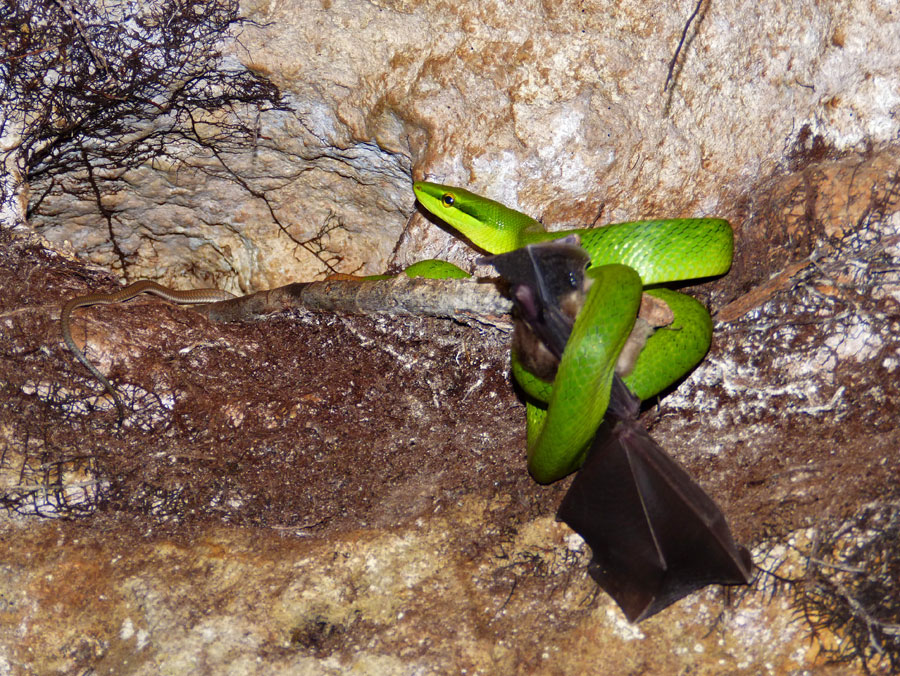
On 16th November 2013, while collecting data on bats in a seashore cave at Havelock Island in the Andamans, my field assistant, Saw Isaac, spotted this beautiful snake and alerted me. The snake was perched safely in a notch at the low roof of the cave, which was occupied by a colony of about a hundred Anderson’s Leaf-nosed Bats (Hipposideros pomona), and was seen constricting its victim. I clicked a few pictures for documentation, after which we left the snake in peace.
The snake was identified as a Red-tailed Trinket (Gonyosoma oxycephalum), a widespread species in South-east Asia. In India it occurs only in the Andaman Islands. It is predominantly arboreal and rarely descends to the ground and hence its diet mainly consists of birds. Thus it may not be unusual that it frequents caves in search of easy prey such as bats.
The Anderson’s Leaf-nosed Bat is a small species of insectivorous bat weighing less than ten grams. It is known to be widely distributed across the Andaman Islands, where it inhabits deep, narrow, tunnel-like chambers of caves and crags and often shares its roost with Horseshoe bats (Rhinolophus spp.). In large, undisturbed caves, their colonies can grow as high as 500 individuals. In mainland India it is known to occur in southern Western Ghats and North-east India.

 CI is a non-profit, non-commercial portal that aims to facilitate wildlife and nature conservation by providing reliable information and the tools needed to campaign effectively.
CI is a non-profit, non-commercial portal that aims to facilitate wildlife and nature conservation by providing reliable information and the tools needed to campaign effectively.
Chosen as 'Picture of the Week'
The Red-tailed Trinket snake (Gonyosoma oxycephalum) is a widespread species in South-east Asia. In India it occurs only in the Andaman Islands. It is predominantly arboreal, and rarely descends to the ground. Thus it may not be unusual that it frequents caves in search of easy prey such as bats.